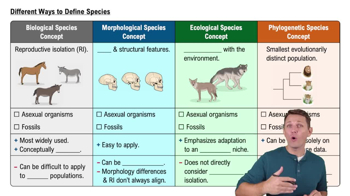Which of the following members of the SAR supergroup is incorrectly paired with its clade?
a. Stramenopiles—brown algae
b. Alveolates—parasites such as Plasmodium
c. Alveolates—dinoflagellates
d. Rhizaria—diatoms
 Verified step by step guidance
Verified step by step guidance Verified video answer for a similar problem:
Verified video answer for a similar problem:



 3:01m
3:01mMaster Overview of the Four Supergroups of Eukaryotes with a bite sized video explanation from Jason
Start learning